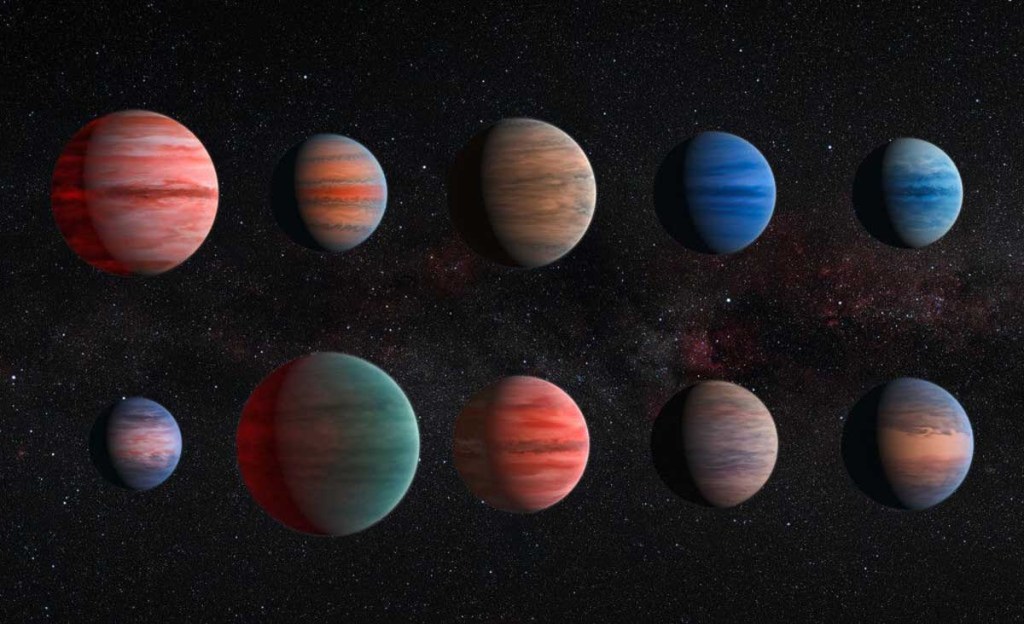Many exoplanets may hide water in their thick clouds
Published 2:10 pm Monday, December 14, 2015

- Clouds and haze are obscuring the water molecule from detection on exoplanets. An artist’s impression of the 10 hot Jupiter exoplanets studied.
So-called hot Jupiters — exoplanets that are basically like Jupiter, but hotter — have often seemed to have less water in their atmospheres than scientists would expect. In a study published Monday in Nature, data from the Hubble provides a possible explanation: Clouds and haze are obscuring the molecule from detection.
In studying exoplanets, scientists have to infer a lot of information from what seems like scant data. When a planet passes in front of its host star, its atmosphere scatters the star’s light in a particular way. Analyzing that signature can tell researchers about the atmosphere of a planet much too far away to observe directly. But in looking at hot Jupiters, scientists had detected much less water in these shimmering signatures than they’d expected, suggesting that the planets had formed in a dry environment — which upends everything we know about planetary birth.
“Our results suggest it’s simply clouds hiding the water from prying eyes, and therefore rule out dry hot Jupiters,” co-author Jonathan Fortney, professor of astronomy and astrophysics at the University of California at Santa Cruz, said in a statement. “The alternative theory to this is that planets form in an environment deprived of water, but this would require us to completely rethink our current theories of how planets are born.”
Since hot Jupiters are quite close to their host stars (which is why they’re so hot) they’re difficult to study — often lost in the glare. The new research used the Hubble and Spitzer space telescopes to analyze the atmospheres of 10 of these giants. As it turns out, these planets that seem to have a water deficit are the same ones that seem to have clouds — exotic things most likely formed by liquid droplets of iron.
“I’m really excited to finally ‘see’ this wide group of planets together, as this is the first time we’ve had sufficient wavelength coverage to be able to compare multiple features from one planet to another,” lead author David Sing of the University of Exeter said in a statement. “We found the planetary atmospheres to be much more diverse than we expected.”





